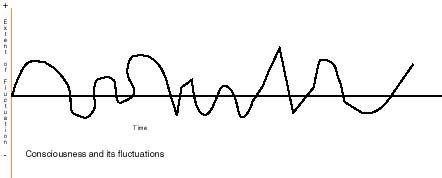Apr 18, 2025
Apr 18, 2025
 The Samadhipada, as earlier specified, is the first chapter of the Yoga-sutra and introduces the system and its aims. There is no explanation of the underlying philosophical system, rather the Yoga adopts the main tenets of the Samkhya system preceding it. The beginning of the Yoga-sutra, is thus abrupt, and could mean that it was part of a larger text or a body of texts. This piece is a commentary on the first two aphorisms of Samadhipada, but it should be pointed out that the second aphorism is the one which contains the essence of the aim of Yoga, and that entire books could be written about each of its key terms.
The Samadhipada, as earlier specified, is the first chapter of the Yoga-sutra and introduces the system and its aims. There is no explanation of the underlying philosophical system, rather the Yoga adopts the main tenets of the Samkhya system preceding it. The beginning of the Yoga-sutra, is thus abrupt, and could mean that it was part of a larger text or a body of texts. This piece is a commentary on the first two aphorisms of Samadhipada, but it should be pointed out that the second aphorism is the one which contains the essence of the aim of Yoga, and that entire books could be written about each of its key terms.
Aphorism 1.1
atha yogànu÷àsanam
“atha yoganusasanam” – “Now begins the exposition of Yoga.” (Yoga-Sutra of Patanjali, Georg Feuerstein, The Yoga Tradition.)
This is the introduction to the first chapter, the first aphorism. The use of the word ‘now’ lends a certain weight to the discourse, as if what passed before was an introduction, a warm-up phase, and the time for the real lecture has come. It could also be that the Yoga-sutra actually formed part of a larger work, of which only this survives, and thus would account for the use of the word ‘now’.
Aphorism 1.2
yoga÷cittavçttinirodhaþ
“chitta vritti nirodhah” – “Yoga is the restriction of the fluctuations of the consciousness.” (Yoga-Sutra of Patanjali, Georg Feuerstein, The Yoga Tradition.)
This is a very challenging sutra to understand. What it does contain is the essence of the aim of Yoga, in one phrase, and so it is, before anything else, a remarkable exercise in reducing language to the barest minimum. And this is fitting, because theYoga-sutra is not meant to be an exercise in literature but a practical way of doing things, a way of life to follow. Patanjali seems to realize the futility of being verbose, of saying a thing in pages and pages, when a single phrase will do.
So Yoga, therefore, is ‘restriction’. It is restricting ‘fluctuations of the consciousness’. What are these ‘fluctuations of the consciousness’? The word ‘fluctuation’ denotes change. To fluctuate is the opposite of being stable. However, it is not random instability – the word also denotes a regular oscillation, a cycle, a rise and fall, an ebb and flow.
The diagram below attempts to illustrate this. On the X axis is the passage of time, and on the Y axis is represented a fluctuating consciousness. The X-axis itself represents a consciousness perfectly ‘restricted’. If a lifespan is represented by the length of the line along the X-axis, it is clear that an attuned person can achieve much more in the same time.

So according to the Yoga-sutra, consciousness fluctuates, and this fluctuation is what yoga attempts to control. The next natural question is evidently – what is consciousness, how does it fluctuate and why do we need to control it?
Consciousness or citta
The sense of ‘self’ or ‘me’ is one of the earliest perceptions of a human being. From a very early age a child learns to differentiate between himself and other beings in the world. As a human grows, this sense of self becomes more and more developed, and he begins to see and appreciate the differences between himself and other beings. He becomes self-aware, or aware of himself as a separate entity. This awareness of self has been called consciousness. As a human being evolves through life, many things change. He grows older, his body grows older too, he moves from place to place, has many experiences. His physical body changes but what remains constant is his awareness of self, his sense of ‘me’. The ‘me’ of a human learns new things as well, but does not seem to undergo a fundamental change in its perception of itself.
It is thus clear that there is an unchanging ‘me’ which is separate and distinct from the body and its experiences, for while the body and the world around it undergoes changes, the sense of ‘me’ never does.
However Yoga philosophy says that the ‘self’ is deluded into believing that it is the body, in identifying with its physicality, in believing that it is inherently different from all other beings, and this delusion is reinforced by society and the body’s own senses. This error is the root cause of a fluctuating consciousness – in the sense of a struggle between the inherent knowledge of the ‘self’ that the world is not how it seems, and all the evidence presented by society and the bodily senses to the contrary.
It is thus clear that a large part, or a large amount of time in a human being’s life is passed in this struggle between the inner self and the bodily self and its wants and desires. It stands to reason that for a being who has resolved this inherent conflict, there will be no more ‘fluctuations’, or at the very least they will be resolved to a great degree.
What is the advantage, then, of ‘restricting fluctuations of the consciousness’? Quite simply, a large part of the lifespan of a human being is passed as a reaction to various emotions – joy, sorrow, jealousy, anger, hate, lust, fear, etc. A lot of time which could otherwise have been used better is lost by reacting to these states of mind. Yoga says that these states of mind are produced when the inner ‘self’ identifies with its physical form and offers a way to correct this misapprehension.
02-May-2004
More by : Ashish Nangia